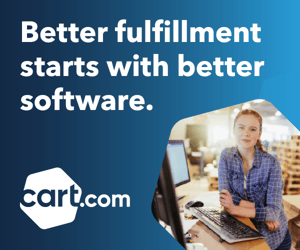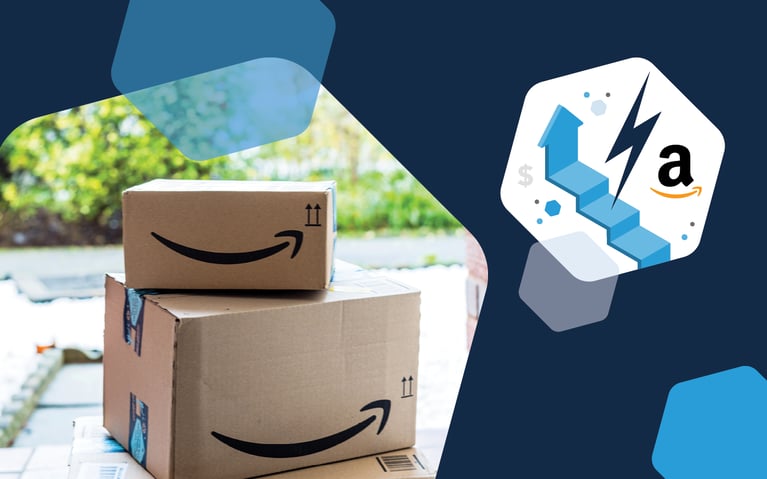Entering the Amazon Marketplace offers retail brands an unparalleled opportunity to tap into a vast and established customer base. The allure of Amazon’s expansive reach and streamlined logistics can be incredibly appealing. However, before diving in, it’s crucial to understand the full scope of Amazon seller fees. These fees can significantly impact your profitability and overall success on the platform. By fully understanding these costs, your brand can make informed decisions, strategize effectively and avoid unexpected financial pitfalls. We’ll take an in-depth look at Amazon's seller fees to help you navigate this complex but rewarding sales channel.
The appeal and complexity of selling on Amazon
In 2023, US-based sellers sold more than 4.5 billion items on Amazon Marketplace – an average of 8,600 items every minute. That said, there are over 2.5 million sellers. Yes, Amazon Marketplace can be a lucrative sales channel, but it requires a strategic approach and a full understanding of how to generate visibility and conversions while navigating rules and fees.
Amazon's intricate fee structure can be daunting, with various charges that can quickly add up and affect your bottom line. Understanding these fees is crucial because they directly impact your profitability and overall success on the platform. Researching the fee structures beforehand gives you a better chance at success, especially when coupled with a strong strategy to build your brand on Amazon, engage customers and utilize seller tools that maximize your reach.
Understanding Amazon's fee structure
Navigating Amazon’s fee structure is essential for retail brands aiming to thrive on the platform. Here’s a breakdown of the main types of fees you’ll encounter:
Referral fees
Amazon charges a referral fee for each item sold, which is a percentage of the total sales price, including the item price and any shipping or gift-wrapping charges. These percentages vary by category, typically ranging from 6% to 45%. For example, most categories such as electronics and apparel fall around the 15% mark, but categories like Amazon device accessories can have significantly higher fees.
Subscription fees
Amazon offers two main selling plans: Individual and Professional. The Individual plan has no monthly subscription fee but incurs a per-item fee of $0.99. In contrast, the Professional plan costs $39.99 per month, regardless of the number of items sold, and comes with a suite of tools and benefits designed for high-volume sellers.
To illustrate, let’s consider a couple of scenarios:
- If you sell a $50 electronic gadget, the referral fee might be 8%, resulting in a fee of $4.00. If you are on the Individual plan, you would also pay an additional $0.99 per item sold, totaling $4.99 in fees.
- Selling apparel priced at $30 with a 15% referral fee means you’ll pay $4.50 per item. On the Professional plan, you avoid the per-item fee, making it more cost-effective if you sell in volume.
By understanding these fees and planning accordingly, your brand can better manage expenses and maximize profitability on Amazon.
Fulfillment by Amazon (FBA) fees: Convenience at a cost
Amazon’s Fulfillment by Amazon (FBA) program offers a streamlined solution for brands looking to leverage Amazon’s extensive logistics network. By using FBA, sellers can store their products in Amazon's fulfillment centers, where Amazon handles picking, packing, shipping and customer service. This convenience allows brands to focus on growing their business while Amazon manages the logistics. FBA can even handle returns and customer service. This service not only simplifies the sales process for sellers but can potentially enhance the shopping experience for customers with faster delivery options. However, it’s also important to note that FBA comes at a cost, especially if you struggle to strike the right balance with inventory. Some of the fees you can incur include:
- Monthly storage fees: Amazon charges monthly fees based on the volume of space your inventory occupies in their warehouses. Fees vary by time of year, with higher charges during peak seasons (October through December). For standard-size items, expect to pay around $0.75 per cubic foot from January to September and $2.40 per cubic foot during the peak months.
- Long-term storage fees: Inventory stored in fulfillment centers for more than 365 days incurs long-term storage fees. These are charged at $6.90 per cubic foot or $0.15 per unit, whichever is greater, incentivizing sellers to maintain optimal inventory levels and avoid stagnant stock.
- Per unit costs: FBA charges per unit fees for picking, packing and shipping orders. These fees are based on the product size and weight, with rates starting at $6.99 for small standard-size items and increasing for larger and heavier products. This cost includes packaging materials, shipping and handling, ensuring a seamless delivery process for customers. Note that you can also save with discounts on multi-unit orders.
- Removal fees: When you need to remove inventory from Amazon’s fulfillment centers, removal fees apply. These fees start at $0.50 per item for standard-size products and can increase depending on the product’s size and weight.
- Disposal fees: If you choose to dispose of unsellable inventory, Amazon charges disposal fees. These fees are similar to removal fees, starting at $0.15 per item for standard-size products, ensuring responsible and efficient handling of excess or damaged goods.
- Miscellaneous fees: Other fees you may run into are remote delivery, lithium batteries or “if you block your MCF orders from being shipped by Amazon Logistics.”
Other fees on Amazon Marketplace
Amazon Marketplace fees can go beyond basic selling and fulfillment fees. There are several others that can impact your profitability if not carefully managed. Here are advertising and other potential costs that every retail brand should be aware of when selling on Amazon.
Advertising fees: Promoting your products on Amazon
To maximize visibility and drive sales, advertising on Amazon is essential. However, it comes with its own set of costs that sellers need to budget for wisely.
- Sponsored products: Amazon’s pay-per-click (PPC) model charges sellers each time a customer clicks on their ad. These ads appear in search results and on product detail pages, helping increase visibility.
- Sponsored brands and sponsored display ads: These ads promote brand awareness and product visibility. Sponsored Brands showcase your brand logo, a custom headline, and multiple products, while Sponsored Display Ads reach customers across Amazon and its partner sites.
Managing your advertising spend effectively is crucial. Set daily budgets, monitor ad performance regularly and adjust bids to optimize your return on investment.
Other potential costs: Hidden and overlooked fees
Beyond the more obvious costs, there are several lesser-known fees that can catch sellers off guard.
- Refund administration fees: Amazon charges a fee for processing customer returns, which can impact your overall margins if return rates are high.
- High-volume listing fees: Large-scale sellers with extensive inventories may incur additional fees for maintaining numerous listings.
- Currency conversion fees: International sellers converting earnings into their local currency may face conversion fees, affecting their net income.
- Miscellaneous fees: There are various other fees, such as long-term storage fees for unsold inventory and costs for optional services like inventory placement or labeling.
Understanding these additional costs is vital for effective financial planning and maintaining profitability on Amazon Marketplace.
Navigate Amazon Marketplace with assistance from the pros
Navigating Amazon seller fees can be daunting, but you don’t have to do it alone. Partnering with marketplace management experts can help you optimize costs and maximize profitability. At Cart.com, we offer tailored strategies and insights to effectively manage your fees and boost your ecommerce success. Reach out today to streamline your Amazon operations and ensure your brand thrives in the competitive marketplace.
Subscribe to our emails for the latest industry insights!
By entering your email, you agree to receive marketing emails from Cart.com







